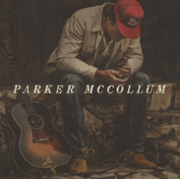New York, NY (Top40 Charts) Bluffing in online poker is a different beast. No raised eyebrows. No nervous chip shuffles. No sweat on the forehead. Just a screen, a bet size, and a decision. But that doesn't mean psychology is off the table—it just changes form. In fact, online poker opens up a new dimension of bluffing, where timing, betting patterns, and behavioral cues become sharper, more strategic, and—if you do it right—more profitable. This guide reveals the psychological tricks that actually
work in online poker and shows you how to bluff smarter, cleaner, and with confidence.
Build a Reputation Before You Bluff
Online, your bluff has no power if you haven't built credibility first. Players are watching your patterns, especially on sites where hand histories or HUDs (heads-up displays) are used. If you bluff too early or too often, you lose all respect—and your chips.
What to do:
- Start with solid, value-heavy play for the first 1-2 orbits
- Fold when you should, raise when it makes sense—build a "tight" image
- Then, when you bluff, it means something. You've earned the fold
In online poker, your betting behavior is your table talk.
Use Consistent Bet Sizing to Create Confusion
In live poker, tone and tension give away strength. Online, inconsistent sizing is the red flag. If you bet big with value and small when bluffing, you're transparent. Smart players will eat you alive.
Psychology trick:
- Use the same size bet for value and bluffs in similar spots
- Keep your flop c-bets, turn barrels, and river bets proportional
- That way, your opponents can't sniff you out just by comparing numbers
If everything you do looks the same, your bluffs blend in seamlessly.
Exploit Patterns in Timing
Your timing is a tell in online poker—even without facial expressions. Players notice if you act instantly, hesitate, or always fast-play value hands. Reverse-engineer that to mess with them.
What works:
- Mix up your response time occasionally—don't always snap-check or auto-bet
- Deliberately tank once in a while with a strong hand to make your future tanked bluffs look legit
- Bluff with natural rhythm, not hesitation—hesitation reads like uncertainty
In online poker, time is a language. Learn to speak it fluently.
Use Position and History to Push Weakness
Psychologically, players hate giving up pots they've already invested in. They also hate folding to someone who's been pushing them around. You can weaponize both.
Tricks that work:
- Bluff more often in late position—when you've seen their hesitation
- If a player folded to your raise earlier, bluff again—they remember
- Exploit "revenge tilt": bluff into players you've recently outplayed—they're more likely to call light
Bluffing isn't just one move—it's the memory of all your moves building pressure over time.
Semi-Bluff Often—It's Safer and Smarter
A semi-bluff is a bet or raise made with a hand that's not currently strong, but has the potential to improve. It's the ultimate psychological tool: it looks like a bluff, feels like a bluff, but gives you extra ways to win.
Why it works:
- You apply pressure and have equity
- You avoid looking completely reckless if you get called
- You maintain a balanced image while still playing aggressively
Bluffing with nothing is risky. Bluffing with potential? That's power.
Know Who You're Bluffing—and When Not To
This is the most underrated psychological trick of all: don't bluff the wrong player. Some players will not fold. Others fold too much. Bluffing is never about you—it's about them.
What to look for:
- Loose-passive players? Don't bluff. Bet for value.
- Tight-nit players? Bluff more—they fear monsters under the bed
- Aggro regs? Use bluff-raises sparingly—they'll fight back
- Short stacks? Don't bluff—they're in "double or die" mode
A good bluff isn't about bravery—it's about reading minds and knowing who to manipulate.
Conclusion: Bluffing Online Is Psychology Without the Face
In live poker, psychology is loud—body language, posture, tone. Online, it's subtle. It's in the patterns. The rhythm. The betting. Bluffing successfully in this space means mastering the mental impression you leave behind. You're not just betting chips—you're writing a believable story. And when that story adds up? Even good players will fold to thin air. So craft your image, use timing to your advantage, and bluff like you've been there before. Because when your strategy plays on their mind, not their eyes, you don't need a poker face. Just a plan. Finally, if you want to enjoy casino entertainment, check out the following in-depth article!
























